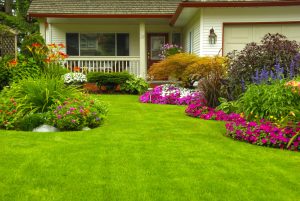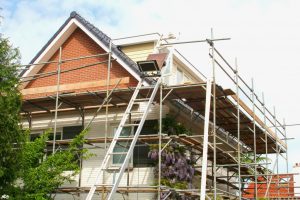The lawn is an integral part of any property, and as such, maintaining its appearance should be the priority of every homeowner. However, even the most careful homeowners can fall victim to a browning lawn. Despite being nowhere near neglectful when it comes to lawn care, your grass may still die because of these things that you may not even know about:
1. Mowing too close
Sure, setting your lawnmower blade a notch lower may decrease the frequency with which you need to mow your lawn. However, this habit of cutting the grass too short is actually killing your grass by stunting blade growth, overexposing your lawn to the sun, and taking away too much of the grass for it to survive.
That said, don’t scalp your lawn for the sake of having to mow less often. Doing so will accomplish nothing but kill your grass. Instead, set the blade notch to the appropriate height, depending on the type of grass that you have as well as the season. If you don’t know what type of grass you have, it’s best to find out to avoid killing your grass. Better yet, contact professionals such as ; Green Oasis Landscaping to help you with proper lawn care.
2. Incorrect watering
Watering your lawn properly is more complicated than it seems. For one, you must avoid overwatering to avoid suffocating your grass and attracting pests to your lawn. Secondly, you must ensure that you water your lawn evenly so that the grass grows uniformly. And lastly, you must avoid watering your lawn too infrequently to prevent your grass from drying out and turning an ugly shade of brown.
Correct watering may take some practice, but don’t take too long before you master the proper way of hydrating your lawn. If you are unsure of how to water your lawn, look up tutorials online, or ask a more experienced homeowner who has maintained a lawn longer than you have.
3. Placing heavy objects on the grass
Is the inflatable pool still out in the backyard even if no one has used it for months? Do your children regularly leave their bikes out on the lawn, directly on top of the grass? Constantly placing heavy objects on grass will eventually kill them due to suffocation. If you don’t want brown spots on your lawn, keep heavy objects off the grass as much as possible. This includes toys, bikes, vehicles, lawn ornaments, and furniture.
4. Excessive foot traffic

Excessive foot traffic can cause your grass to become thinner and eventually die out. To avoid this from happening to your lawn, divert foot traffic to another area, preferably without grass. Put up a ‘keep off the grass’ sign if you must. And if you’re hosting gatherings in the backyard, spread out furniture to prevent people from excessively trampling a single area in the grass.
5. Misusing fertilizer, insecticide, and herbicide
When used improperly, fertilizers, insecticides, and herbicides can do more harm than good and eventually cause the demise of your lawn. That said, do not use any fertilizer, insecticide, herbicide, or any other lawn chemical without reading and understanding the instructions. Misusing these items can lead to potentially catastrophic effects, for instance, killing your lawn and your neighbor’s lawn with too much insecticide.
Before you use fertilizer, insecticide, or herbicide, you also need to know the measurements of your lawn. Ensure that you get the proper measurements before attempting to use any fertilizer or chemicals. Otherwise, you won’t know how to use the item properly, and thus increase your chances of misusing it.
If you don’t know how to measure your lawn or don’t have the tools to do so, it’s best to get a lawn care professional to do it for you.
6. Fungus or insects
Two of the most common causes of a dying lawn are fungus and insects. But if you are not well-versed in lawn maintenance, you may not spot the things that are killing your grass. In any case, it’s best to call a professional as soon as you start noticing dead spots on your lawn. If it’s insects or fungus, immediate action is imperative to prevent further damage, as well as increase the chances of revival.
If you want to go the DIY way, you can use an insecticide to get rid of the pests on your lawn, but do so with caution. The same goes for fungus. Using fungicide is your best bet, but you need to know how to use it properly.
Seeing your lawn did before your eyes is perhaps one of the most frustrating things as a homeowner. So if you start noticing brown spots on your grass, it might be one of these things that are causing it.





